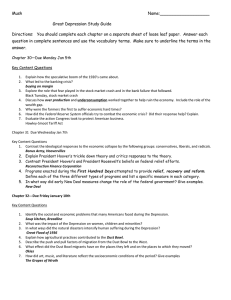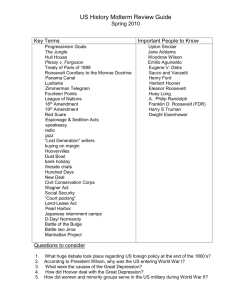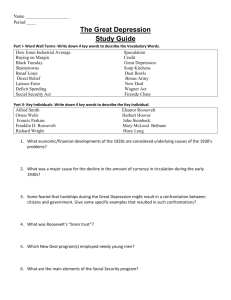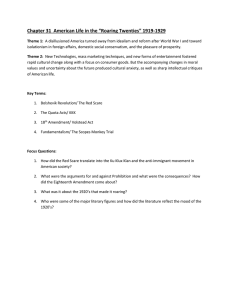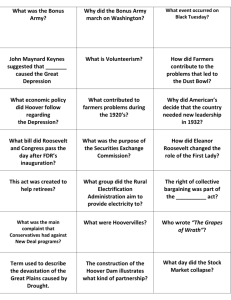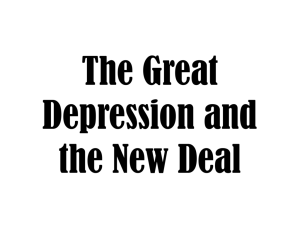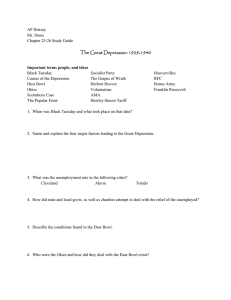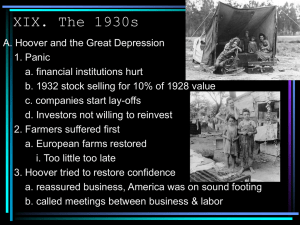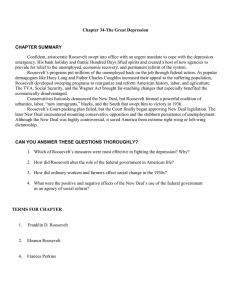Unit XVIII – The Great Depression and the New Deal (Chapters 32-33)
advertisement
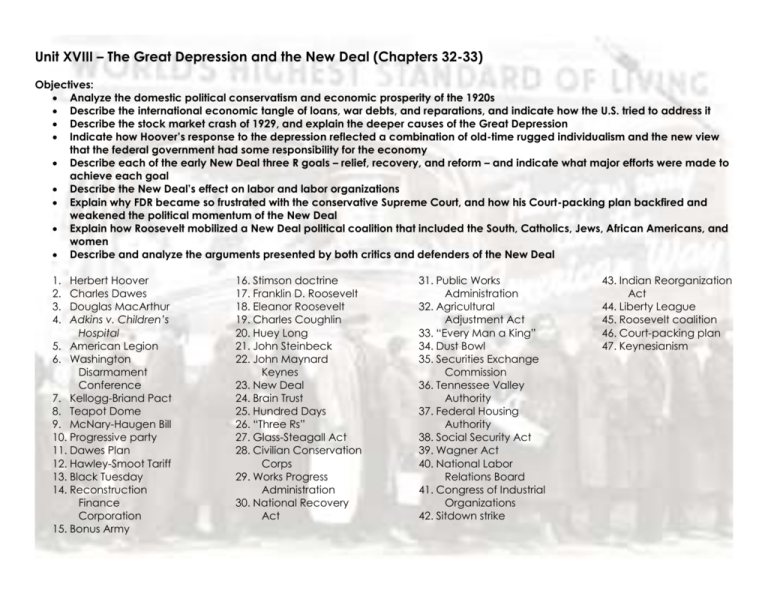
Unit XVIII – The Great Depression and the New Deal (Chapters 32-33) Objectives: Analyze the domestic political conservatism and economic prosperity of the 1920s Describe the international economic tangle of loans, war debts, and reparations, and indicate how the U.S. tried to address it Describe the stock market crash of 1929, and explain the deeper causes of the Great Depression Indicate how Hoover’s response to the depression reflected a combination of old-time rugged individualism and the new view that the federal government had some responsibility for the economy Describe each of the early New Deal three R goals – relief, recovery, and reform – and indicate what major efforts were made to achieve each goal Describe the New Deal’s effect on labor and labor organizations Explain why FDR became so frustrated with the conservative Supreme Court, and how his Court-packing plan backfired and weakened the political momentum of the New Deal Explain how Roosevelt mobilized a New Deal political coalition that included the South, Catholics, Jews, African Americans, and women Describe and analyze the arguments presented by both critics and defenders of the New Deal 1. 2. 3. 4. Herbert Hoover Charles Dawes Douglas MacArthur Adkins v. Children’s Hospital 5. American Legion 6. Washington Disarmament Conference 7. Kellogg-Briand Pact 8. Teapot Dome 9. McNary-Haugen Bill 10. Progressive party 11. Dawes Plan 12. Hawley-Smoot Tariff 13. Black Tuesday 14. Reconstruction Finance Corporation 15. Bonus Army 16. Stimson doctrine 17. Franklin D. Roosevelt 18. Eleanor Roosevelt 19. Charles Coughlin 20. Huey Long 21. John Steinbeck 22. John Maynard Keynes 23. New Deal 24. Brain Trust 25. Hundred Days 26. “Three Rs” 27. Glass-Steagall Act 28. Civilian Conservation Corps 29. Works Progress Administration 30. National Recovery Act 31. Public Works Administration 32. Agricultural Adjustment Act 33. “Every Man a King” 34. Dust Bowl 35. Securities Exchange Commission 36. Tennessee Valley Authority 37. Federal Housing Authority 38. Social Security Act 39. Wagner Act 40. National Labor Relations Board 41. Congress of Industrial Organizations 42. Sitdown strike 43. Indian Reorganization Act 44. Liberty League 45. Roosevelt coalition 46. Court-packing plan 47. Keynesianism
